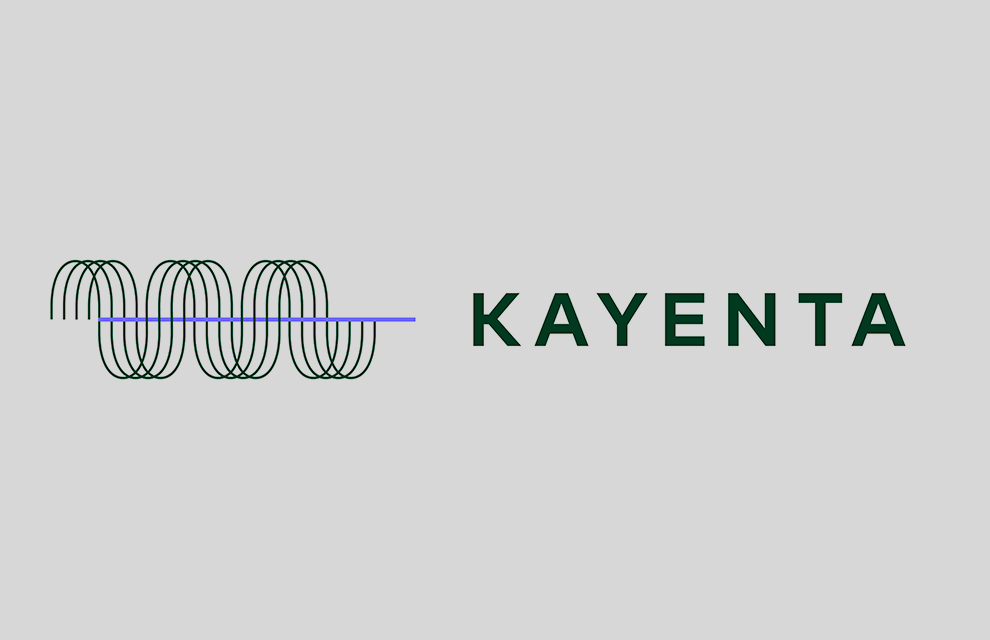Exclusive: Kayenta goes live
23 March 2021 UK
 Image: Kayenta logo
Image: Kayenta logo
New market entrant Kayenta is targeting allocation inefficiencies between hedge funds and prime brokers by offering a cloud-based, modular platform that promises to reduce the high costs of financing.
A team of capital markets veterans including Matthew Peakman, Chris Hagstrom, and Mark Toone have unveiled the fintech with a promise to bring efficiency to the hedge fund treasury functions with a focus on reducing the painful costs of financing operations.
The Kayenta platform will sit between a hedge fund and its prime brokers to review and amalgamate reports on financing rates and allocation preferences to ensure a hedge fund is placing its business in the best place to receive the most competitive rates.
Financing inefficiencies have been a first-hand challenge for many of the Kayenta team who aim to leverage their own experience of working on prime broker, securities financing and hedge fund treasury desks to get to the core of the issue in an innovative, technology-oriented way.
The company was founded in 2018 by Peakman, who brings experience as Nomura’s head of fund and corporate derivatives trading, and Dan Childs, who was previously head of international treasury at Citadel, who first met during their time at Oxford University. The pair saw the start-up through its first 18 months but Childs has now taken on a management role with Jefferies.
Kayenta has since captured a wealth of industry knowledge to take-on management roles including Hagstrom, who now serves as CEO after 15 years at UBS where he most recently served as head of global financing services for the Americas, and Kelly Russo, who also joins from UBS where she spent the past few years as equities chief of staff, following seven years in its securities lending business.
Before that, Russo spent just over six years on Goldman Sachs' securities lending desk. She will now bring all this to bear on Kayenta’s business development expansion.
Beyond its staff, Kayenta also benefits from an advisory team that aims to enhance its in-house market expertise to guide the product development and ensure it accurately targets the mutual pain points of both hedge funds and prime brokers.
The fintech has spent the past two years developing and testing its modular, cloud-native proprietary system with clients and formally brought its platform to market as of January, with several funds already on board.
Toone — who joined in October 2019 as chief marketing officer after nearly a decade at Morgan Stanley as head of delta one structured product sales for Europe, the Middle East and Africa — tells SFT that the start-up was conceived to offset external pressures to reduce fees and overheads by streamlining wasteful and cumbersome treasury processes.
Electronification of execution and the Markets in Financial Instruments Directive have reduced overheads in trading and research, respectively, and the last real bastion of costs is a hedge fund’s financing activities, Toone tells SFT.
According to UK analytics firm Coalition, hedge funds forked more than $20 billion to their financing counterparts in fees alone in 2019. Toone speculates that for the average hedge fund the costs associated with borrowing stocks and cash are second only to personnel overheads.
Toone suggests that some of these losses can be offset by negotiating more favourable spreads but the realities of this balance sheet intensive service mean prime brokers are unable to shave much off before it becomes unviable.
Moreover, all but the largest hedge funds are unable to stomach the enormous costs of building an in-house system to address financing inefficiencies, as opportunities to recoup some of that investment is limited unless you’re willing to share your technology with your peers.
This is where Kayenta comes in. Each prime broker has a different calculation methodology to their financing rules, and report them differently.
Therefore, hedge funds may be receiving up to 20 reports a day from each of their prime brokers which need to be consolidated and normalised to be able to see what their funding profile looks like. A fund will then have to take each prime broker’s preferences into account.
Kayenta will take on this burden and present the results of its analysis to investment managers with suggestions on where reallocations might be considered.
As one of its unique selling points, Kayenta will also receive reports from administrators to weed out any errors and avoid unreconciled data.
“Kayenta’s technology allows us to take the reconciled position data, process it through our proprietary accrual engine to determine what the financing costs should be, and then compare against the actual costs on each of the prime broker reports,” Toone explains.
This data management exercise provides the necessary reliability to enable managers to instruct reallocations with confidence, but will also eliminate long-running booking mistakes that can create administrative headaches and potentially large reimbursements, he says.
Toone predicts this will lead to significant benefits for both the prime broker and the hedge fund with the former getting more of the assets it wants and the latter seeing significant savings in time and money.
Early evidence suggests that the financial savings can offset Kayenta’s aggressive fee structure in a matter of weeks, Toone claims.
As Kayenta moves into the second development phase its plans to bring additional functionality to allow investment managers to not only more-easily identify inefficiencies but also act on them within the platform.
It currently has staff in the UK and the US and is primarily focused on those markets but Toone emphasises the product is global in scope.
SFT will soon be speaking to CEO Chris Hagstrom to explore the Kayenta offering and the technology behind it.
A team of capital markets veterans including Matthew Peakman, Chris Hagstrom, and Mark Toone have unveiled the fintech with a promise to bring efficiency to the hedge fund treasury functions with a focus on reducing the painful costs of financing operations.
The Kayenta platform will sit between a hedge fund and its prime brokers to review and amalgamate reports on financing rates and allocation preferences to ensure a hedge fund is placing its business in the best place to receive the most competitive rates.
Financing inefficiencies have been a first-hand challenge for many of the Kayenta team who aim to leverage their own experience of working on prime broker, securities financing and hedge fund treasury desks to get to the core of the issue in an innovative, technology-oriented way.
The company was founded in 2018 by Peakman, who brings experience as Nomura’s head of fund and corporate derivatives trading, and Dan Childs, who was previously head of international treasury at Citadel, who first met during their time at Oxford University. The pair saw the start-up through its first 18 months but Childs has now taken on a management role with Jefferies.
Kayenta has since captured a wealth of industry knowledge to take-on management roles including Hagstrom, who now serves as CEO after 15 years at UBS where he most recently served as head of global financing services for the Americas, and Kelly Russo, who also joins from UBS where she spent the past few years as equities chief of staff, following seven years in its securities lending business.
Before that, Russo spent just over six years on Goldman Sachs' securities lending desk. She will now bring all this to bear on Kayenta’s business development expansion.
Beyond its staff, Kayenta also benefits from an advisory team that aims to enhance its in-house market expertise to guide the product development and ensure it accurately targets the mutual pain points of both hedge funds and prime brokers.
The fintech has spent the past two years developing and testing its modular, cloud-native proprietary system with clients and formally brought its platform to market as of January, with several funds already on board.
Toone — who joined in October 2019 as chief marketing officer after nearly a decade at Morgan Stanley as head of delta one structured product sales for Europe, the Middle East and Africa — tells SFT that the start-up was conceived to offset external pressures to reduce fees and overheads by streamlining wasteful and cumbersome treasury processes.
Electronification of execution and the Markets in Financial Instruments Directive have reduced overheads in trading and research, respectively, and the last real bastion of costs is a hedge fund’s financing activities, Toone tells SFT.
According to UK analytics firm Coalition, hedge funds forked more than $20 billion to their financing counterparts in fees alone in 2019. Toone speculates that for the average hedge fund the costs associated with borrowing stocks and cash are second only to personnel overheads.
Toone suggests that some of these losses can be offset by negotiating more favourable spreads but the realities of this balance sheet intensive service mean prime brokers are unable to shave much off before it becomes unviable.
Moreover, all but the largest hedge funds are unable to stomach the enormous costs of building an in-house system to address financing inefficiencies, as opportunities to recoup some of that investment is limited unless you’re willing to share your technology with your peers.
This is where Kayenta comes in. Each prime broker has a different calculation methodology to their financing rules, and report them differently.
Therefore, hedge funds may be receiving up to 20 reports a day from each of their prime brokers which need to be consolidated and normalised to be able to see what their funding profile looks like. A fund will then have to take each prime broker’s preferences into account.
Kayenta will take on this burden and present the results of its analysis to investment managers with suggestions on where reallocations might be considered.
As one of its unique selling points, Kayenta will also receive reports from administrators to weed out any errors and avoid unreconciled data.
“Kayenta’s technology allows us to take the reconciled position data, process it through our proprietary accrual engine to determine what the financing costs should be, and then compare against the actual costs on each of the prime broker reports,” Toone explains.
This data management exercise provides the necessary reliability to enable managers to instruct reallocations with confidence, but will also eliminate long-running booking mistakes that can create administrative headaches and potentially large reimbursements, he says.
Toone predicts this will lead to significant benefits for both the prime broker and the hedge fund with the former getting more of the assets it wants and the latter seeing significant savings in time and money.
Early evidence suggests that the financial savings can offset Kayenta’s aggressive fee structure in a matter of weeks, Toone claims.
As Kayenta moves into the second development phase its plans to bring additional functionality to allow investment managers to not only more-easily identify inefficiencies but also act on them within the platform.
It currently has staff in the UK and the US and is primarily focused on those markets but Toone emphasises the product is global in scope.
SFT will soon be speaking to CEO Chris Hagstrom to explore the Kayenta offering and the technology behind it.
NO FEE, NO RISK
100% ON RETURNS If you invest in only one securities finance news source this year, make sure it is your free subscription to Securities Finance Times
100% ON RETURNS If you invest in only one securities finance news source this year, make sure it is your free subscription to Securities Finance Times



